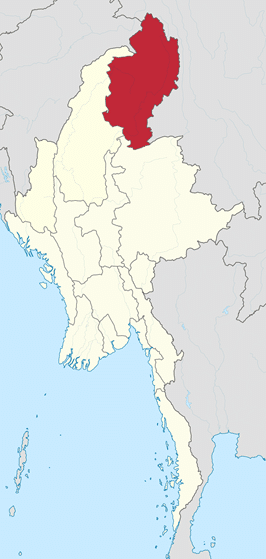Help our local partners realise their vision of hope for their communities

Welcome to our new series titled Spotlight, which gives our readers a quick news update focusing on developments that affect the countries where HART works. This week, we’re taking a look at Kachin State, North East Burma, where renewed offensives have displaced thousands more civilians.
Thousands of people have been driven from their homes over the past few weeks following renewed offensives in Kachin State, North East Burma. As fighting continues between the Burmese Military (Tatmadaw) and the Kachin Independence Army (KIA), reports have estimated that over 4000 Kachin residents have been displaced. This latest figure adds to the already 100,000+ that have fled from Kachin State and neighbouring Shan state due to the civil conflict. International rights groups, NGOs and the US Embassy in Yangon have condemned the recent onslaught, calling for the safety and protection of civilians and for access to essential humanitarian aid.

What is happening?
Following the breakdown of a 17-year ceasefire in Kachin State 2011, the attacks between the Tatmadaw and the KIA have intensified. Recently, the fighting has become worse, involving heavy artillery and aerial bombardments that have destroyed villages and homes. Reports of mortar shells targeting IDP (Internally Displaced Persons) camps in Kachin State make calls for humanitarian access and a ceasefire that much more urgent. The Burmese Government is facing new waves of criticism for their restrictions on aid after its inaction against Human Rights violations.
Why is it happening?
The Rohingya crisis opened up the world to the abuse that ethnic groups have suffered in Burma. The Kachin people are no different; a majority Christian population making up 6% of the nationwide total, who have struggled for their autonomy for over 50 years amid continued violence in a predominately Buddhist country. Normally, this wouldn’t be enough to consider the reason for violence, but after almost 700,000 Muslims have fled Burma because of persecution, it is plausible.
Another point of contention is the land-grab tactics used to secure and exploit the natural resources of Kachin State. The Irrawaddy River (& Salween River) is currently under threat from large scale dam projects that will destroy the biodiversity of the river and surrounding areas, as well as hundreds of villages and displacing thousands of residents. Some consider the now suspended Myitsone Dam to be the cause of the 2011 ceasefire breakdown.
Further to this, Kachin state has an array of precious gems available to whomever controls local mining projects. The KIA have benefitted from lucrative ‘illegal’ mining operations that have strengthened their efforts against the Tatmadaw gaining access to their treasure. Recent attacks have targeted Tanai Township where some mines were captured by the Tatmadaw in 2011. Experiencing intense fighting since January 2018, the Tatmadaw have been resisting KIA threats to regain their lost territory. This has resulted in almost 2000 IDPs who have had to seek shelter in nearby churches and forests. Whilst the rebels and the Tatmadaw launch strikes to seize territory that boasts gold, amber, jade, copper and ruby mines, the civilians of Kachin State are left impoverished, vulnerable and ultimately displaced. Instead of reinvesting this new wealth back into Kachin society; Elites, Military Commanders and Foreign investors line their pockets with revenue from blood-soaked jewels that are stained with longstanding oppression and violence.
What needs to happen?
A revival of the 2015 Ceasefire Agreement (NCA). There needs to be a push for comprehensive political reform that brings about a lasting ceasefire by acknowledging the underlying socioeconomic issues of the conflict. Nonetheless, for right now, as reports of air strikes and intense fighting continue, urgent humanitarian access and ensuring the safety of civilians needs to be granted to prevent further casualties.
For further information on the displacement in Northern Burma, read our report: No Funding, No Food, No safe Return – End of Funding Leaves Shan People Facing Starvation